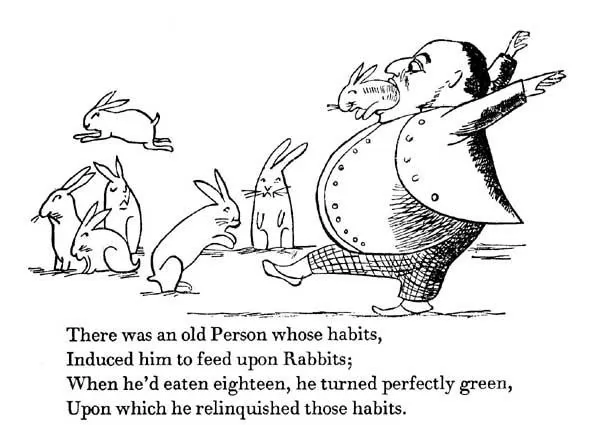The limerick is probably the most well-known poem in the English language. It has evolved over hundreds of years into the poem we know and love today, with its refusal to take itself seriously endearing it to generations. But the biggest riddle of all remains the subject of speculation: how did it get its name?
The limerick is loved by many. Written by both celebrated scribes and occasional scribblers, limericks have been enjoyed by readers for centuries. William Shakespeare, Alfred Lord Tennyson, Rudyard Kipling, Robert Louis Stevenson and Mark Twain all experimented with the limerick. And, of course, countless verses have been composed by amateur poets, drinking buddies and competition hopefuls.
Limericks have so captured the public imagination that they’ve been the subject of many competitions in newspapers and magazines. Even today, writing limericks is still a competitive sport. The ongoing Limerick Laughs Contest in American magazine, The Saturday Evening Post, and the annual Bring your limericks to Limerick competition which ran for its sixth year in 2018, are evidence of that.
The limerick’s fame isn’t really that surprising. It’s short, easy to compose, memorable and funny. Perhaps this characteristic humour is the reason it’s endured for so long. After all, in the past, its punchline provided cheap entertainment much like internet memes and YouTube videos do today. Or perhaps it’s treasured because its lack of airs and graces make it universally accessible. It could even be that it’s remembered fondly from childhood, thanks to its use in nursery rhymes.


Nursery rhymes often used the limerick form
Earliest Use
Despite its long popularity, the limerick wasn’t actually so-called until the end of the nineteenth century. In fact, for much of its history, it hasn’t quite been the poem we know and love today. Nevertheless, for centuries before the modern limerick evolved, the form was lending itself to prayer, literature, storytelling, nursery rhymes and nonsense verse. It certainly is an adaptable little gem!
So how far back does the humble limerick verse go in history? Well, in his fascinating book The Curious Story of the Limerick, Matthew Potter tells us that early versions date as far back as the thirteenth century. However, the rhyming schemes of these early forms were different, and the suggestive theme didn’t feature. In fact, the philosopher, Sir Thomas Aquinas, composed one of the first limericks in the form of a Latin prayer. That’s about as far from the modern limerick as you can get.
Bedlam
Potter goes on to say that more regular use of the form began in the late sixteenth century and was initially associated with beggars. The dissolution of the monasteries by Henry VIII saw an increase in the numbers of vagrants wandering the streets. Many of these poor people suffered from mental illness, and called Tom O’Bedlam’s (after the infamous London hospital).
A poem called “Tom O’Bedlam” written in the style of a limerick appeared around 1600. It documented Tom’s madness, his need for charity, his escape into a fantasy world and the fact that nobody should fear him. Again, this poem differed from the modern limerick. The first line didn’t rhyme with the second and fifth lines. Plus, rather than poke fun at poor Tom, it showed sympathy and understanding for his plight.
According to Potter, Shakespeare used the limerick in four plays dating from the late 1590s and early 1600s. Othello and The Tempest both include limericks in the form of drinking songs, while Hamlet and King Lear include limericks used by mentally disturbed characters. In King Lear the character in question is actually disguised as a madman called Tom O’Bedlam.
The Limerick in Ireland
So, what about the limerick’s use in Ireland? It has been suggested that soldiers returning from war in Europe during the eighteenth century brought the limerick to Ireland. We do know that the Maigue Poets, who hailed from the Maigue River in Limerick, used the form.


Limerick City as seen across the Shannon
Up until the middle of the seventeenth century poetry in Ireland was practised by specially schooled Bardic Poets, who were central to the oral tradition of preserving and passing on knowledge. According to Matthew Potter, after the Bards’ demise, groups of poets began to meet for poetry recitals and discussions. These local groups would pass judgement on the work of their peers, in the manner of a jury. The Maigue Poets were one of the most notable groups and wrote some poems which were limericks when translated into English.
The eighteenth century also saw the limerick becoming associated with nursery rhymes following the publication of several children’s books. While the oral tradition of nursery rhymes is ancient, most verses have been lost to history. The publication for the first time ever of books specifically for children, like Tom Thumb’s Pretty Song Book in 1744 and Mother Goose’s Melody in 1765 meant that these verses were preserved and forever associated with the limerick.
Edward Lear – Champion of the Limerick
The nineteenth century saw the limerick reach peak popularity, thanks largely to the work of Edward Lear (1812-1888). An English artist and writer, Lear wrote children’s poetry. “The Owl and the Pussycat” was one of his. He adopted the limerick as a form for writing nonsense verse, a quirky type of poetry that defies rational interpretation. Nonsense verse became very popular during the Victorian era. It uses rules of grammar, rhyming schemes and established poetic forms to give rational structure to its irrational content.


A poem from “The Book of Nonsense” by Edward Lear
Lear’s Book of Nonsense, first published in 1846, is wonderfully whimsical and ridiculous. He composed it for children, specifically his employer’s children.The first two editions weren’t hugely successful, but the third edition, published in 1861, struck a chord with Victorian adults and children alike, according to Matthew Potter, and kickstarted the golden age of the limerick.
Victorian Rebels
It’s interesting that the limerick flourished during the Victorian era because respectability and morality were paramount at the time. However, it was also a time of great social change, witnessing the rise movements like socialism, liberalism and feminism. Perhaps there was an air of rebellion about the limerick that endeared it to the masses.
It’s very possible that in the limerick itself, people found a means of rejecting traditional imposed values. According to Potter, it was during this time that the limerick became associated with obscenity. In fact, these verses became so popular that Punch magazine abandoned the first ever limerick competition due to the number of obscene limericks received from readers. Perhaps the limerick provided an opportunity to push the somewhat repressive boundaries of Victorian society.
A 1904 publication called 700 Limerick Lyrics gives us some idea of the limerick’s fame at this time. Editor Stanton Vaughn introduces it as “an institution provocative of wit of many and the amusement of all” and he quotes from the Evening Star Newspaper, Washington: “The English-speaking world knows of thousands, some composed for special occasions and speedily perishing; others with the vitality of real genius in them.” Vaughn goes on to say: “A writer in a western paper notes that ‘this is the day of the limerick,’ and says of this popular form of nonsense verse that ‘it possesses a jingling rhythm which haunts the memory long after the measured sonorousness of an epic or the lilting melody of a lyric have departed.’”
The Limerick Gets Its Name
But the greatest mystery of all remains unsolved: how did the limerick get its name? Does it really come from Limerick itself – or is it merely coincidence? The puzzle is complicated by the fact that the form is much older than the name. Even when Edward Lear published his Book of Nonsense, he didn’t call his poems limericks, but nonsense verses. The earliest known use of the word limerick has recently been identified as 1889. Matthew Potter made this discovery and included it in the second edition of The Curious Story of the Limerick.
Previously the earliest known use of the name was thought to be a Cambridge students’ magazine called The Cantab. In October 1898, it included “Illustrated Limericks” in its table of contents. Subsequently Potter himself uncovered evidence, published in the first edition of his book, of a letter written by Rudyard Kipling to his publisher in 1895 wherein Kipling refers to the fact that he is writing limericks and will reveal them to his publisher when he sees him.
Now, thanks to Potter’s continued research we have evidence dating to 1889 that the limerick was so-called. In a novel written by a now-forgotten English writer called Geoffrey Drage, there is reference to a party held by a student where someone sings a song referred to as a limerick. The host of the party says no limericks are allowed in his rooms, and the novel’s other characters agree. The gist is that limericks are vulgar drinking songs and below their station.
Drinking Song
So, the term limerick was used from at least 1889 – but how did the name come into use in the first place? Unfortunately, there is no definitive answer to that question, although there are several theories.
The most popular theory is that it comes from an eighteenth century song called Will You Come Up to Limerick? At parties, guests would compose verses of this song, with the entire company joining in for the chorus. Several publications, dating from around this time, refer to this song, its connection to the limerick, and its (often) indecent content.
In fact, Stanton Vaughn refers to this song as the source of the limerick’s name in 700 Limerick Lyrics. He says: “Now, we can’t give a dictionary definition of the limerick, for the reason that the word, for some unaccountable reason, isn’t given; but at least we know one when we see one. Edward Lear has generally been charged with the invention of the five-line stanza well known as the ‘limerick,’ but he always pleads ‘not guilty,’ saying the form was suggested to him… if we are not mistaken, [it]was taken from the popular song, ‘All the Way Up to Limerick.’”
Maigue Poets
Previously, it was thought that the limerick was invented by the Maigue Poets and was named after the place they hailed from. However, we know this is not the case because the form existed long before they and their compositions did. Nevertheless, some theorists believe that the publication (in English) of the Maigue poets’ work in 1850 inspired the limerick’s name.
We may never solve the riddle of the limerick, but we can certainly continue to enjoy the ‘People’s Poetry,’ as Matthew Potter calls it. He identifies its humour and sense of the absurd as its defining feature, enabling it to maintain its popularity and, importantly, allowing us to poke fun at modern society. Amen to that, and long live the limerick!
Grateful thanks to Matthew Potter for permission to use his work, The Curious Story of the Limerick, published by The Limerick Writers’ Centre, 2017.





